Shanghai’s Metropolitan Magnetism(1)
LOCATED at the mouth of the Yangtze River, Shanghai has grown from a small fishing village with just a few roads and a limited number of residents some 700 years ago to a glamorous international metropolis. If, as Johann Wolfgang von Goethe mused, “architecture is frozen music,” then Shanghai is an eternal concert. Buildings in this city, renowned at home and abroad, have witnessed the vicissitudes of society, and it is through architecture that one can best understand this city.
A Fair of the World’s Architectures
In the past century, an ethos of commingled local Shanghai culture and modern Western trends has taken shape in the city. Its structures often showcase diversified yet distinct styles – traditional Chinese, exotic, or a combination of both – so engendering a fair of the world’s architectures.
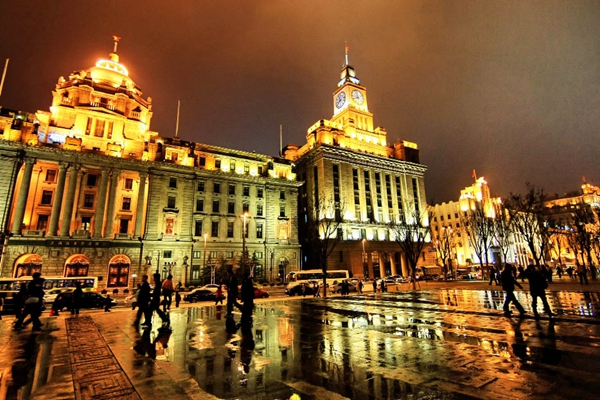
When night falls, the Bund is illuminated by brilliant lights.
The Bund stands out among all Shanghai’s attractions. Metropolises always vaunt their particular showpieces, and the Bund is definitely the pride of Shanghai.
Extending for more than 1,500 meters from East Yan’an Road in the south to the banks of the Suzhou River in the north, the Bund is host to a collection of constructions in various styles, such as neoclassicism, renaissance, and Baroque, to name just a few.
The confluence of the Suzhou River and the Huangpu River is deemed the cradle of Shanghai culture and the origin of the Bund. Here are stored the memories of old Shanghai. Well-preserved red brick walls and elegantly carved balustrades evoke 20th-century Shanghai. Waibaidu Bridge stretching over the Suzhou River is the first riveted steel bridge in China, representing the progress of modernity and the industrialization of Shanghai at the time it was built. In 2008, the 100-year-old bridge was detached for a thorough restoration. It was replaced one year later and continues to serve its purpose of handling heavy traffic.
The Peace Hotel situated on the Bund was the city’s first structure built in the style of the modernist school. Built in 1929 and first known as the Cathay Hotel, the northern wing was owned by Jewish businessman Victor Sassoon. The Gothic construction, with its distinctive green pyramid-shaped roof, is 77 meters high and has 12 floors. The Sassoon Presidential Suite on the top floor is where the owner used to live.
The headquarters of today’s Shanghai Pudong Development Bank is located in the former HSBC building on the Bund. Called “the most luxurious building from the Suez Canal to the Bering Strait” in the 1930s, the construction is a masterpiece of classical architecture in modern China. Eight large mosaic murals originally adorned the enhance hall of the buliding. The dome was decorated with frescos depicting the signs of the zodiac, Apollo, and Luna. However, they were covered when the bank closed this branch office in the 1950s and were not discovered until November 1997.
A total of 23 old buildings on the Bund have survived historical changes and present the city’s glorious past. An enjoyable evening can be spent on the Bund riverbank taking in the magnificent cultural heritage illuminated by resplendent lights. When night falls, a ferry trip on the Huangpu River will offer yet another perspective from which to enjoy the Bund.
Landmark Constructions in Shanghai
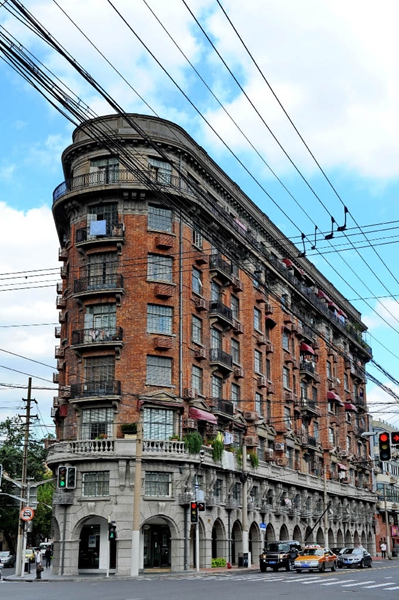
Wukang Mansion
Situated at the junction of Huaihai Road and Wukang Road, this building in the French renaissance style is one of the most representative pieces of architecture in Shanghai. Formerly named the Normandie Apartments, the mansion was designed by Hungarian architect Lszl Hudec in 1924 and was the first veranda-style apartment in Shanghai. This concrete building was built in a triangular shape due to its location at the intersection. From a distance, the mansion resembles a cruise ship.
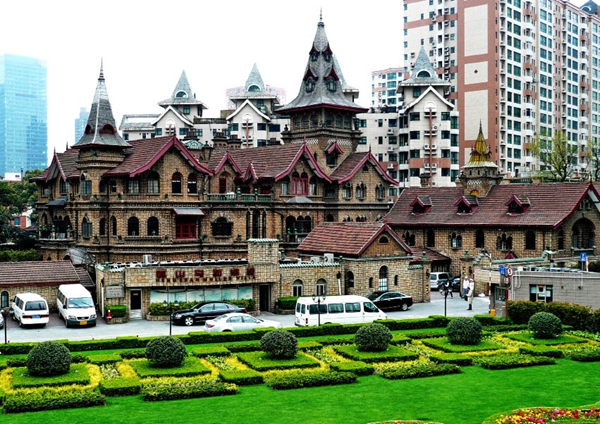
Moller Villa
Once upon a time, a girl dreamed of a house like those described in fairytales. Her doting father commenced construction of this villa according to the girl’s description. That is said to be how Moller Villa came into being. With obvious Scandinavian features, the villa was the home of British entrepreneur Eric Moller. The three-storied main building is covered with bricks of bright colors. The embossed roofs with high and low spires resemble those on gorgeous castles. Valuable plants including juniperus chinensis and cedar grow with luxuriant foliage in the beautifully tiled garden, which occupies 2,000 square meters on the southern side of the main building.
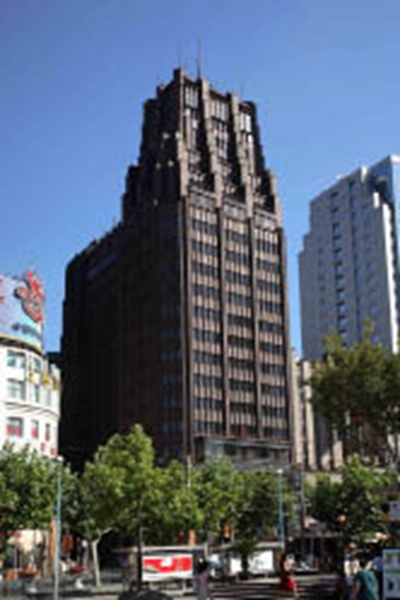
Park Hotel
The Park Hotel was considered the central landmark of the city in the 1930s and 1940s. Deemed the most remarkable skyscraper in the Far East, the hotel was the tallest building in China in the half century since its opening. The designer Lszl Hudec used steel framework, puce bricks, a vertical visual effect, and an ever-narrowing shape to create a prime example of art deco and modernity.
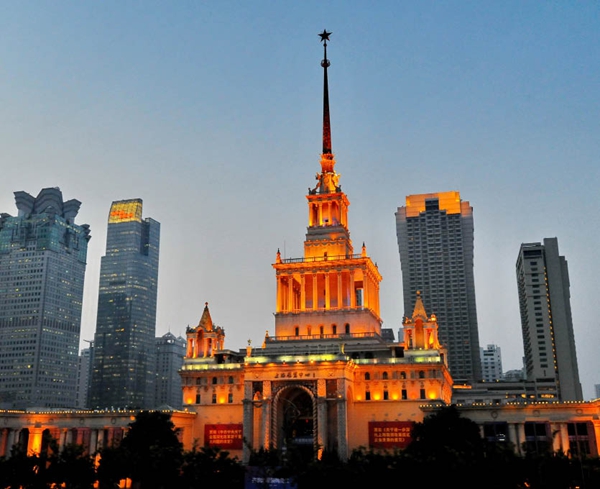
Shanghai Exhibition Center
Formerly known as the Sino-Soviet Friendship Building, the center was designed by an architect from the Soviet Union in the 1950s. The main building in the center commands its share of central Shanghai’s skyline with a red star-topped gilded spire 104 meters high. The adornments and materials used for the building showcase the classical Russian style.





